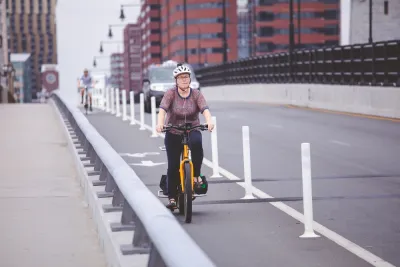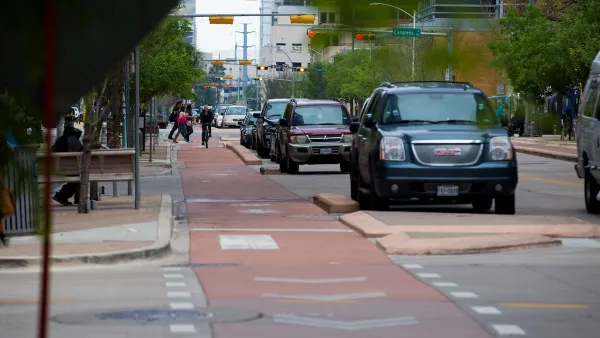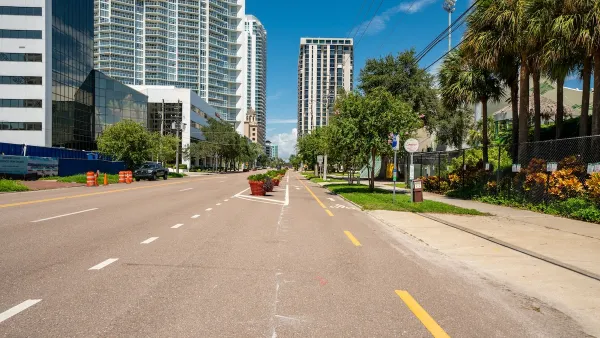The League of American Bicyclists ranks states based on bike infrastructure and safety efforts.

The League of American Bicyclists issued its list of most bike-friendly states, with Washington and Massachusetts topping the list. The top five are rounded out by Oregon, California, and Minnesota.
As Dan Zukowski explains in Smart Cities Dive, “The League ranked states on the basis of five actions it advocates every state to take, said the organization’s policy director, Ken McLeod. These are centered around bicycle infrastructure, safety, funding, planning and laws.”
The report assesses state-owned roads, which see the highest number of fatalities for people biking and walking. “The biggest difference between the best-ranked states and those at the lower rungs is whether they have specific planning around bike safety and update their plans every 10 years,” McLeod said.
While most states are still spending less than 2 percent of federal transportation funds on bike and pedestrian infrastructure, New Hampshire improved its ranking by spending more than 2 percent and creating a new bike plan. “The report calls out Kansas for improving its ranking more than any other state and three states — Maine, Oklahoma and South Carolina — for adopting or planning to adopt their first statewide bike plans.”
FULL STORY: The 5 most ‘bicycle-friendly’ states

National Parks Layoffs Will Cause Communities to Lose Billions
Thousands of essential park workers were laid off this week, just before the busy spring break season.

Retro-silient?: America’s First “Eco-burb,” The Woodlands Turns 50
A master-planned community north of Houston offers lessons on green infrastructure and resilient design, but falls short of its founder’s lofty affordability and walkability goals.

Delivering for America Plan Will Downgrade Mail Service in at Least 49.5 Percent of Zip Codes
Republican and Democrat lawmakers criticize the plan for its disproportionate negative impact on rural communities.

Test News Post 1
This is a summary

Test News Headline 46
Test for the image on the front page.

Balancing Bombs and Butterflies: How the National Guard Protects a Rare Species
The National Guard at Fort Indiantown Gap uses GIS technology and land management strategies to balance military training with conservation efforts, ensuring the survival of the rare eastern regal fritillary butterfly.
Urban Design for Planners 1: Software Tools
This six-course series explores essential urban design concepts using open source software and equips planners with the tools they need to participate fully in the urban design process.
Planning for Universal Design
Learn the tools for implementing Universal Design in planning regulations.
EMC Planning Group, Inc.
Planetizen
Planetizen
Mpact (formerly Rail~Volution)
Great Falls Development Authority, Inc.
HUDs Office of Policy Development and Research
NYU Wagner Graduate School of Public Service





























